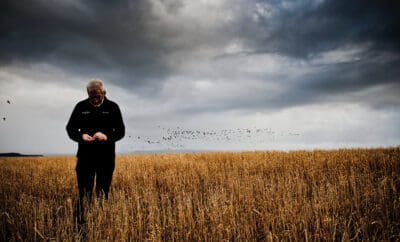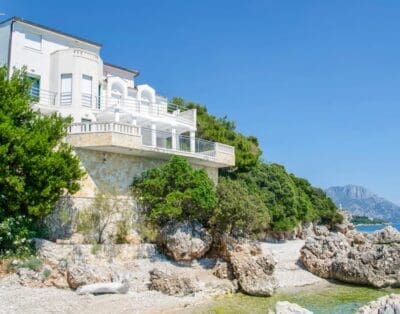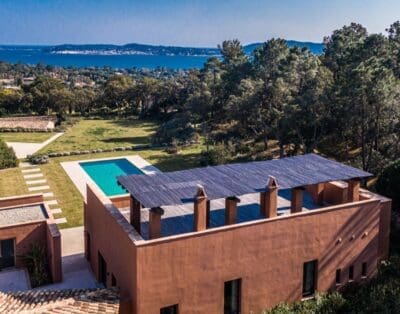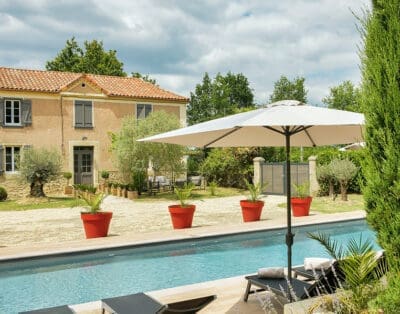Glenturret Launch A 50 Year Old Whisky
Is John Lawrie, MD of the Glenturret Distillery and the Michelin Starred Lalique Restaurant, the future of the Scottish whisky industry? His approach to business certainly reflects the sort of elements which will take the whole sector forward: a respect for tradition, a refreshingly international outlook and an innovative marketing spirit, full of entrepreneurship and imagination.
‘It takes more than old Scots stories about the olden days,’ he says. ‘We need to look at what the best in the world are doing and create our own version here.’
And that is exactly what he is accomplishing. Aside from the core range of whisky, annual and very limited expressions are becoming highly sought after, not least so the 50-year-old, distilled in 1972 that has just been released at an RRP of £40k a bottle. Before I discuss this quite remarkable whisky, allow me to give historical context, as The Glenturret may be one of, if not the oldest distillery in Scotland.
For seventeen years the Glenturret Distillery was subsumed within the Famous Grouse Experience, a visitor destination which presented the whisky-making process through the lens of the Famous Grouse brand. Nothing wrong with that of course. But since the 2019 purchase of the distillery by a consortium which included the Lalique French luxury glass brand, John has been at the centre of a remarkable transformation.
Let’s start in the restaurant. If you think distillery restaurants are a ‘chicken in whisky sauce and cranachan for afters’ sort of joints, then you’re in for a surprise at the Glenturret Lalique restaurant, which holds the distinction of being the only distillery in the world to have a Michelin Starred restaurant.
‘Look at wineries in the Napa Valley,’ John says. ‘They celebrate the terroir, and that’s what we do here. We reflect the distilling process and the area we are from. So, herbs and mushrooms come from out the back door. The sourdough bread uses barley from the process, we even reflect the three temperatures from the mash tun in the cooking.’
While you can have lunch in the restaurant, this isn’t a place for a quick snack at the end of the distillery tour.
‘We have thirty covers, six tables, five nights a week. It’s a very special gastronomic experience. Some of our tasting menu items take two to three days to make. Chef Mark Donald joined us in 2021 from Number One at the Balmoral in Edinburgh. He also took that restaurant to a Michelin Star. But it’s not just the kitchen. Our sommelier is Julien Beitzung from the Four Seasons in Hong Kong. Front of House is Emilio Munzo Algarra who has also had a stellar career, including working with Heston Blumenthal at the Fat Duck in Bray. When we say world-class we aren’t kidding.’
The bar too is not like the average distillery bar. For a start, there is a huge range of what others might see as competitors’ products.
‘We took the decision to use the bar to celebrate the very best of our colleague’s work. Of course, we have the full Glenturret range from the non-age statement Triple Wood to our 25- and 30-year-olds, but we also have carefully chosen, iconic whiskies. Laphroaig 10, Jura Superstition – for example. There is so much demand for quality malt whiskies we should celebrate not compete.’
Glenturret has heritage to spare. In a sector where age matters, there’s been a distillery on this spot since 1763.
‘There’s been a distillery here since before then, we have a rental document from 1763, signed by the Barony of Ochertyre, so that’s what we can stand behind. It’s a long time to be in one place. Owners come and go, but the whisky goes on. And it’s a long time to have been part of the same community here in Crieff, so we have to make our contribution to the local economy. We’ve increased the restaurant staff from 28 to 53 – we’re proud of that. We’ve also become established as a global destination. Hotels and B&Bs in the area have told us they get bookings on the strength of people who have travelled to dine with us.’
But if there is plenty of heritage, there is also a sharp focus on modern marketing practices. John is almost as enthusiastic about the bottle as the contents. ‘I used to look at the Glen Rothes bulb bottle on shelves and think that was a bit of genius. I wanted our products to have the same stand-out distinction on shelves. As a high quality, relatively low volume whiskey we have to draw attention in high-end bar and restaurant shelves.’
It helps to be part owned by Lalique, people who can do just about anything with glass. ‘We took the same design – square, high shoulders, small base, thick punt – across all of our range. The 25- and 30-year-olds get a hand finish in the Lalique workshops. I think it works. The first time I saw the design ‘in the wild’ in the bar of Grantley Hall in Yorkshire I took way more photographs than I should have!’
The marketing nous extends to the use of social media.
‘We love consumer interaction. Great when it’s positive – but also vital to listen to constructive feedback. Consumers are so well educated about the products. They know what they like and won’t be fobbed off with answers. But that’s what keeps us on our game.’
Joint ventures are also part of Glenturret’s marketing plan.‘With Lalique we’ve worked with Jaguar on the 60th birthday of the E type. What a privilege to work on probably the most famous car in the world. We could see that while iconic cars and an iconic whisky might seem very different – both brands were built on strong stories and great heritage.’
Ultimately, the whisky brand is about the whisky. Re-establishing Glenturret as a premium malt wasn’t without challenges. ‘At Glenturret half the output went for blending in the Famous Grouse, and half for single malts. You need different strengths for each type. That’s when we turned to the whisky alchemist Bob Dalgarno He is one of those people who doesn’t want a high profile, but who are at the top of their profession. He’s someone you leave to get on with it. You don’t harass him with targets and ratios. You let him walk around the warehouse, roll the barrels about, nose them, taste, and let him produce amazing whiskies. Every year he produces something unique and remarkable.’
Having successfully re-launched the Glenturret brand and established the restaurant in the middle of a pandemic – ‘we had to do the launch, socially-distanced, in four different rooms in Gleneagles, I interviewed the global distributors on Zoom but still saw exports of the 25-year-old sell out each year in seven months, five months and latterly four weeks!’ – John is in a good position to consider the future of the Scottish brown spirit sector.
‘Some see an inevitable drift towards consolidation, with individual brands gradually brought under ownership of a few big companies, as is happening in the craft beer sector. But an alternative is the wine model, where there is room for everyone, big operators and an infinite number of smaller producers, each crafting something unique and distinct, economic at low-ish volumes and with discerning and enthusiastic consumers.’
In the distillery they fill the casks by hand – it’s an experience in itself to inhale the fruity vapours. They weigh the casks on an Avery scale – brass sliding weights. This is what heritage means. ‘We have to invest in staying old. It’s the reverse of the usual business model. It takes time to train people to do it the old way. We have no computer sensors and no automatic valves. Ian Rennick the Distillery Manager has known this place man and boy. As an apprentice blacksmith, he made much of the ironwork here. It’s all done by eye and hand. ‘It’s part of the philosophy here.
Glenturret has 3 cornerstones that form the backbone of their beliefs.
‘Provenance – we are working with whisky laid down before we were here. And we’re laying down whisky that will be drunk long after we’ve gone. We are just looking after the middle bit.
‘Prowess – we know a bit about the craft, after all these years.
‘Passion – you have to care. We’re lucky Lalique shares this approach. We are doing things here that make no sense in the balance sheet. But that’s what tradition is all about.’
It is the first cornerstone that I wish to elaborate on further – Provenance. As previously mentioned, the vast majority of whisky was used in blends, but fortunately, some barrels were sold to private customers. It is one of these barrels, distilled in 1972, that the distillery has been able to buy back (it has never left their warehouse) and bottle as a 50-year-old. The whisky is quite extraordinary displaying youthful notes on the nose that bely it’s age. The core fruits which the distillery so actively sought in distillation were apparent, in the form of (for me at least) an apricot tarte tatin laced with cardamon and vanilla ice cream. The palate developed over time in the glass, opening up notes reminiscent of toffee apple, and butterscotch with undertones of vanilla. Its length was extraordinary, lasting minutes.
I enquired as to the refilled sherry barrels’ history, and in particular if it derived from European oak or American. I thought European given the subtlety of the oak in the whisky. Unfortunately, records were not available of this, and when asked if carbon dating would be carried out, was informed that the barrel had been destroyed so impossible to do. Why destroy such a historic barrel was my initial thought, but John explained it was burnt in order to create ink pigments that were used in a painting by Scottish artist Matthew Draper. The “Loch Turret” painting depicts the ancient freshwater Loch Turret that the distillery sources its water from. The painting, along with bottle No 1 (of the 150 produced) was auctioned by Sothebys, realising £63k.
As you would expect, the whisky is housed in a hand-carved black crystal decanter from Lalique and designed by Marc Larminaux, in a process that took 18 months to complete.









